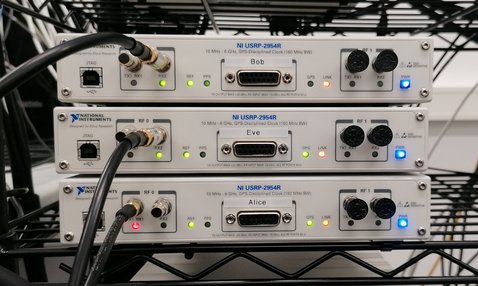Physical Layer Security

While cryptographic algorithms have been traditionally used for implementing security in communication systems, information theoretic physical layer security (PLS) techniques are a different approach, which attracted much attention recently. PLS techniques exploit the noisy and imperfect nature of the communication channel to embed security at the physical layer. Since PLS techniques do not rely on the assumption that certain mathematical problems are hard to solve with classical computers, they can address some of the problems that arise with the imminent advent of quantum computing. PLS is envisioned to extend and reinforce classical cryptography in future communication systems.
At the Chair of Theoretical Information Technology the theoretical foundations of PLS are analyzed. Further, approaches how to embed PLS in modern and post-Shannon communication systems are studied. With the help of simulations, we perform a first comparison of the theoretical results with the performance in more realistic practical scenarios. The demonstration of these theories takes place at the ACES Lab, where implementations of prototypes under real-time operation constraints are investigated.
The evaluation of physical layer security (PLS) approaches involves the implementation of wiretap channels, where a sender Alice intends to transmit messages to a legitimate receiver Bob under specific channel characteristics, e.g., AWGN, slow or fast fading, and more realistic ones. A third party, Eve, takes part in the communication by secretly and passively eavesdropping the transmitted messages. The objective of PLS is to ensure that Eve obtains as little information about the original message as possible.